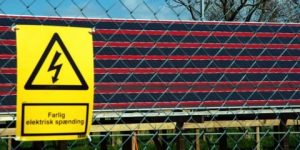Prof. Frederik Krebs of the Technical University of Denmark published the Journal of Polymer Science: Polymer Physics‘ most highly cited paper this year, on roll-to-roll printing of organic materials and polymers; you can read it for free here. He explains below why this technology is generating so much interest and excitement in the field:
Traditional microelectronics aims to make as much as possible using as little as possible. Take, for example, the central processing unit in a computer, which needs to be both as highly functioning and small as possible. Corresponding manufacturing techniques have been developed: while expensive equipment and materials are used, the success of microelectronics relies on little material being used. When it comes to lowering the cost of both materials and equipment while increasing production speed and volume, the game takes on an additional challenge: make as much as possible using the smallest amount of low-cost materials and processes.
When it comes to organic electronics, the vision of roll-printed flat screens, logic, sensing and energy harvesting – simple, cheap manufacturing of complex devices – has been around for decades, but it has taken a long time to reach a level where such devices and functionalities could be used in commercial products. Generally this is because before something can replace an existing product it has to perform better. To date, the goal of fast processing and low cost has been met, but performance is still often mediocre from the consumer’s viewpoint.
Roll-to-roll processing, as we recently reviewed in the Journal of Polymer Science: Polymer Physics, is a winning approach when it comes to addressing manufacturing speed. A particular challenge however remains: to make objects that require use of three dimensions for functionality using a two-dimensional technique. One approach has been to print layers on top of each other. Practically, the third dimension is still very small: objects of 30—50 cm in the printing dimensions can be only nanometers or a few microns in the thickness dimension, but function can still be enabled. The most extreme example is perhaps the fully printed tandem polymer solar cell that consists of twelve printed and coated layers. There remains a lot of progress to be made, but as the third dimension grows, so does the complexity of the devices and the capacity for a high density of complex function possible using the technique.
Roll-to-roll processing is a field in rapid development, which involves interplay between fundamental materials properties, processing, machinery, and device functionality to enable rapid production of complex devices. The state-of-the-art today has advanced to the stage where printed organic circuits and devices can be mass-produced, even using equipment in the laboratory.
After demonstration at the laboratory level, the next stage is ‘upscaling’. Upscaling is essential for commercialisation, but since the process of upscaling implies the use of a lot of material, the devices had better be useful once upscaled or you have wasted a lot of material. This then couples back to ensuring that the objects that are to be upscaled are at a useful-enough level of performance that an upscaling effort makes sense.
As an example, polymer solar cells have been upscaled using roll-to-roll processing by a factor of many millions, from an active area of a few square millimeters to hundreds of square meters, and from single junctions to hundreds of thousands of serially connected junctions; this has been achieved in a reproducible fashion and in very high yield of functioning devices.
With this upscaling comes low cost: the cost of individual objects is potentially so low so that once realized each one should be virtually free to produce, meaning the cost would mostly be associated with distribution and handling. This principle has been demonstrated with freeOPV, where small solar cell modules are available for free and are shipped as a post card at no cost to the recipient.
The future of mass-produced and low cost organic electronics is thus bright if the upscaling with roll-to-roll processing works as well for other applications as it has for solar cells. The major benefits and costs will then be in the integration and combination into more complex functionalities.
R. R. Søndergaard, M. Hösel, F. C. Krebs, J. Polym. Sci. Part B: Polym. Phys. (2013), 51, 16-34.
F. C. Krebs, N. Espinosa, M. Hösel, R. R. Søndergaard, M. Jørgensen, Adv. Mater. (2013) DOI: 10.1002/adma.201302031

















